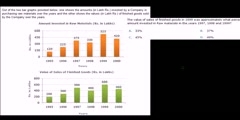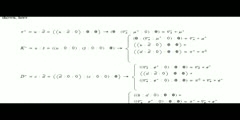Lec 22 - Interpreting Scripture: Medieval Interpretations
"Lec 22 - Interpreting Scripture: Medieval Interpretations" Introduction to New Testament (RLST 152) The principles of interpreting the New Testament in this course assume a historical critical perspective. The historical critical method of interpreting a text privileges the intended meaning of the ancient author, the interpretation of a text's original audience, the original language the text was written in, and the avoidance of anachronism. However, for most of the last two thousand years, this has not been the method of interpretation of the Bible. Pre-modern interpreters, such as Origen and Augustine, felt free to allegorize and use the text as they saw fit. It was only through the Reformation and other events in modern history that the historical critical method became the predominant method of interpretation. 00:00 - Chapter 1. The Principles of the Historical Critical Method of Interpretation 20:11 - Chapter 2. The History of Historical Criticism 30:53 - Chapter 3. Pre-Modern Interpretation and "Literal" and "Allegorical" Meanings of Texts 34:19 - Chapter 4. Pre-Modern Interpreters: Origen 39:06 - Chapter 5. Pre-Modern Interpreters: Augustine 43:32 - Chapter 6. Pre-Modern Interpreters: Bernard of Clairvaux Complete course materials are available at the Open Yale Courses website: http://open.yale.edu/courses This course was recorded in Spring 2009.
Video is embedded from external source so embedding is not available.
Video is embedded from external source so download is not available.
Channels:
Tags: Lec 22 - Interpreting Scripture: Medieval Interpretations
Uploaded by: yaletestamenthst ( Send Message ) on 12-09-2012.
Duration: 49m 29s
Here is the next lecture for this course
Lec 21 - Interpreting Scripture: Hebrews
48:06 | 2052 viewsLec 37 - Interpreting Linear Graphs
05:05 | 2127 viewsLec 7 - Late Medieval Religion and Its Cr ...
45:52 | 2550 viewsLec 40 - Interpreting Inequalities
06:39 | 2218 viewsLec 25 - Public Health 250A - Lecture 30: ...
43:23 | 1886 viewsLec 26 - Public Health 250A - Lecture 32: ...
51:32 | 1740 viewsLec 11 - Earth and Planetary Science C20 ...
48:01 | 2831 viewsInterpreting bar graphs
04:04 | 1731 viewsLec 8 - Nineteenth-Century Medicine: The ...
49:12 | 2798 viewsTHE NEW TEARS OF ARAXES
05:18 | 7888 viewsTop 10 Scientific Facts found in the Bible
29:41 | 112469 viewsLec 18 - Cormac McCarthy, Blood Meridian ...
40:20 | 2183 viewsChemical Science - Hydrogen Atom Wavefunc ...
49:59 | 17637 viewsLec 4 - Nuclear Secrecy and Ecology
42:49 | 2428 viewsHadron Architecture and Meson Decays 2
16:16 | 4987 viewsNo content is added to this lecture.
This video is a part of a lecture series from of Yale
Lecture list for this course
Lec 1 - Introduction: Why Study the New Testament?
Lec 4 - Judaism in the First Century
Lec 5 - The New Testament as History
Lec 10 - The Acts of the Apostles
Lec 11 - Johannine Christianity: The Gospel
Lec 12 - Johannine Christianity: The Letters
Lec 16 - Paul as Jewish Theologian
Lec 19 - The Household Paul: The Pastorals Introduction to New Testament
Lec 20 - The Anti-household Paul: Thecla Introduction to New Testament
Lec 21 - Interpreting Scripture: Hebrews
Lec 23 - Apocalyptic and Resistance
Lec 24 - Apocalyptic and Accommodation
Lec 25 - Ecclesiastical Institutions: Unity, Martyrs, and Bishops
















